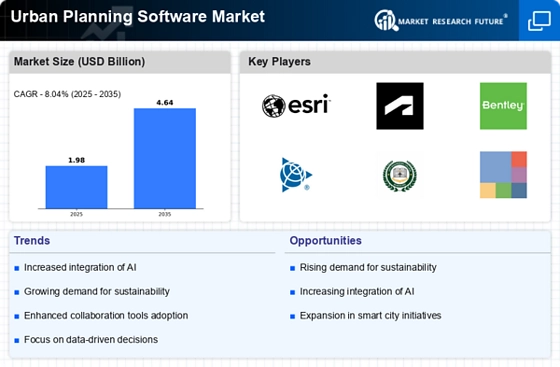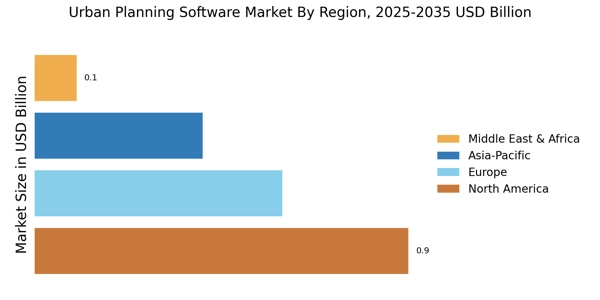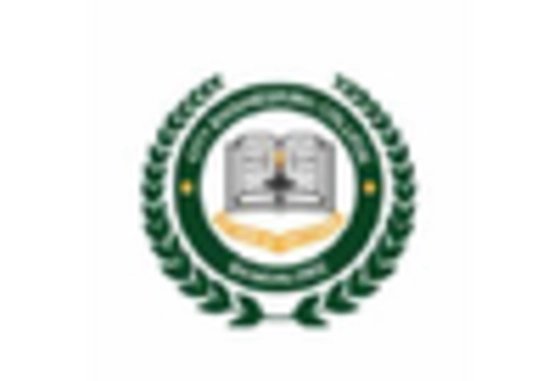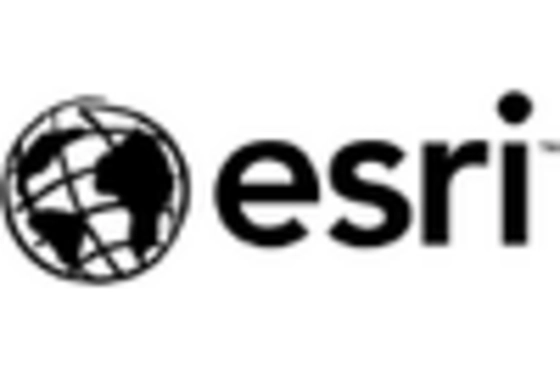Rising Urbanization
The Urban Planning Software Market is experiencing a surge in demand due to the rapid urbanization occurring worldwide. As more individuals migrate to urban areas, cities face increased pressure to manage resources effectively. This trend necessitates advanced planning tools that can assist in optimizing land use, transportation, and infrastructure development. According to recent data, urban areas are projected to house approximately 68% of the global population by 2050. This demographic shift underscores the need for sophisticated urban planning software that can facilitate sustainable growth and efficient resource allocation. Consequently, the Urban Planning Software Market is likely to expand as municipalities and urban planners seek innovative solutions to address the challenges posed by urbanization.
Advancements in Technology
Technological advancements are playing a pivotal role in shaping the Urban Planning Software Market. Innovations such as artificial intelligence, machine learning, and cloud computing are enhancing the capabilities of urban planning software, making it more efficient and user-friendly. These technologies enable planners to simulate various scenarios, optimize resource allocation, and improve stakeholder engagement. The increasing availability of mobile applications and web-based platforms is also facilitating greater accessibility to planning tools. As technology continues to evolve, the Urban Planning Software Market is expected to grow, driven by the demand for more sophisticated and integrated solutions that can address the complexities of modern urban environments.
Growing Environmental Concerns
Environmental sustainability is becoming a central theme in urban planning, significantly impacting the Urban Planning Software Market. As cities grapple with issues such as climate change, pollution, and resource depletion, there is an increasing demand for software that can help planners design eco-friendly urban spaces. Tools that facilitate the assessment of environmental impacts and promote sustainable practices are gaining traction. Recent studies indicate that urban areas contribute to over 70% of global carbon emissions, highlighting the urgent need for effective planning solutions. Consequently, the Urban Planning Software Market is likely to expand as stakeholders seek software that aligns with sustainability goals and supports the development of greener urban landscapes.
Government Initiatives and Funding
Government initiatives aimed at enhancing urban infrastructure and sustainability are significantly influencing the Urban Planning Software Market. Various governments are increasingly investing in smart city projects, which often require advanced software solutions for effective planning and management. For instance, funding programs and grants are being allocated to support the development of urban planning technologies. In recent years, it has been observed that public sector investments in urban planning software have risen, reflecting a commitment to improving urban environments. This trend suggests that the Urban Planning Software Market will continue to benefit from governmental support, driving innovation and adoption of new technologies in urban planning.
Increased Focus on Data-Driven Decision Making
The Urban Planning Software Market is witnessing a shift towards data-driven decision making, which is reshaping how urban planners approach their projects. The integration of big data analytics and geographic information systems (GIS) into urban planning software allows for more informed decisions based on real-time data. This trend is particularly relevant as cities strive to enhance their operational efficiency and responsiveness to citizen needs. The ability to analyze demographic trends, traffic patterns, and environmental impacts through sophisticated software tools is becoming essential. As a result, the Urban Planning Software Market is likely to see a rise in demand for solutions that offer robust data analytics capabilities, enabling planners to create more effective and sustainable urban environments.


















Leave a Comment